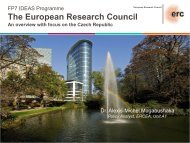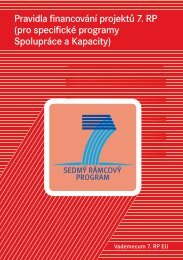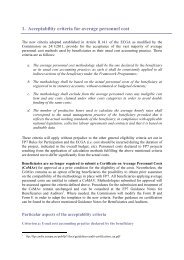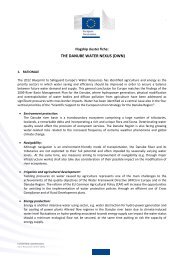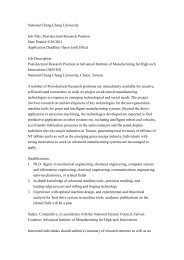Guide to Research and Innovation Strategies for Smart Specialisation
Guide to Research and Innovation Strategies for Smart Specialisation
Guide to Research and Innovation Strategies for Smart Specialisation
Create successful ePaper yourself
Turn your PDF publications into a flip-book with our unique Google optimized e-Paper software.
Being place-based<br />
Box 6 - Distinctive features of smart specialisation <strong>for</strong> (peer) review<br />
<strong>and</strong> update of the RIS3<br />
The concept of smart specialisation emphasises the need of developing <strong>and</strong> implementing<br />
innovation strategies that take in<strong>to</strong> proper account the regional features, such as its economic<br />
structure, existing areas of excellence, clusters, traditions, R&D competences, presence of<br />
research institutions, extension of the inter-regional <strong>and</strong> inter-national network of scientific<br />
<strong>and</strong> technical collaborations. For this reason, the major aspects related <strong>to</strong> the current <strong>and</strong><br />
projected structure of the regional economy should be investigated in the preliminary, selfassessment<br />
phase <strong>and</strong> receive sufficient attention thereafter. Additional elements of interest in<br />
view of a RIS3 are the distribution by size <strong>and</strong> innovativeness of firms in the regional<br />
economy, such as the share accounted <strong>for</strong> by small, innovative firms <strong>and</strong> by large, R&Dintensive<br />
companies. Attention should be devoted also <strong>to</strong> the width <strong>and</strong> strength of the<br />
industrial base, uncovering specific risk fac<strong>to</strong>rs, such as the existence of a number of<br />
industries in need of modernisation or the dependence of the regional economy on a limited<br />
number of industries.<br />
Achieving critical mass<br />
<strong>Smart</strong> specialisation involves making choices, leading <strong>to</strong> priority setting <strong>and</strong> channelling<br />
resources <strong>to</strong>wards the investments having the potentially higher impact on the regional<br />
economy. The distinctive elements that can guide review, moni<strong>to</strong>ring <strong>and</strong> assessment <strong>for</strong><br />
RIS3 should thus include the existence of clearly identified priorities <strong>for</strong> regional innovation<br />
policy. The EU dimensions should also be incorporated in a RIS3 from its very origins. When<br />
setting regional priorities, priorities at EU level should have been taken in<strong>to</strong> account. Those<br />
policies <strong>and</strong> funding instruments that are targeted <strong>to</strong> a specific <strong>to</strong>pic, should mainly aim at one<br />
of the societal challenges (climate change, population ageing…)<br />
.<br />
Putting in place an entrepreneurial process of discovery<br />
The existence of an entrepreneurial process of discovery of new specialisation domains is a<br />
central tenet of the concept of smart specialisation. Its translation <strong>for</strong> practical use proves<br />
nevertheless quite difficult, because of the lack of easily observable characteristics <strong>and</strong><br />
indica<strong>to</strong>rs associated with it. For the purposes of peer review <strong>and</strong> moni<strong>to</strong>ring, one should take<br />
in<strong>to</strong> account that a regional innovation strategy can encompass several <strong>for</strong>ms of innovation<br />
(including non-technological innovation, service innovation, <strong>and</strong> social innovation).<br />
Particular attention should hence be devoted <strong>to</strong> the regular exploration <strong>and</strong> consideration of<br />
emerging opportunities. If such process of discovery is found missing or wanting, the fac<strong>to</strong>rs<br />
that could lead <strong>to</strong> its establishment should be identified. Finally, the existence of policies <strong>and</strong><br />
instruments <strong>to</strong> favour the diffusion of the output of innovation can also contribute <strong>to</strong> the<br />
creation of a lively <strong>and</strong> entrepreneurial innovation system.<br />
63



